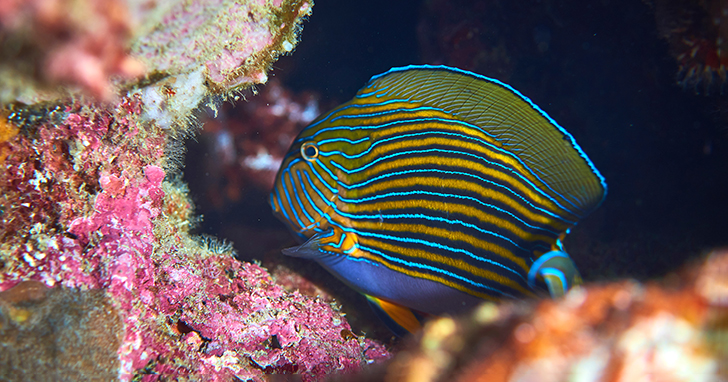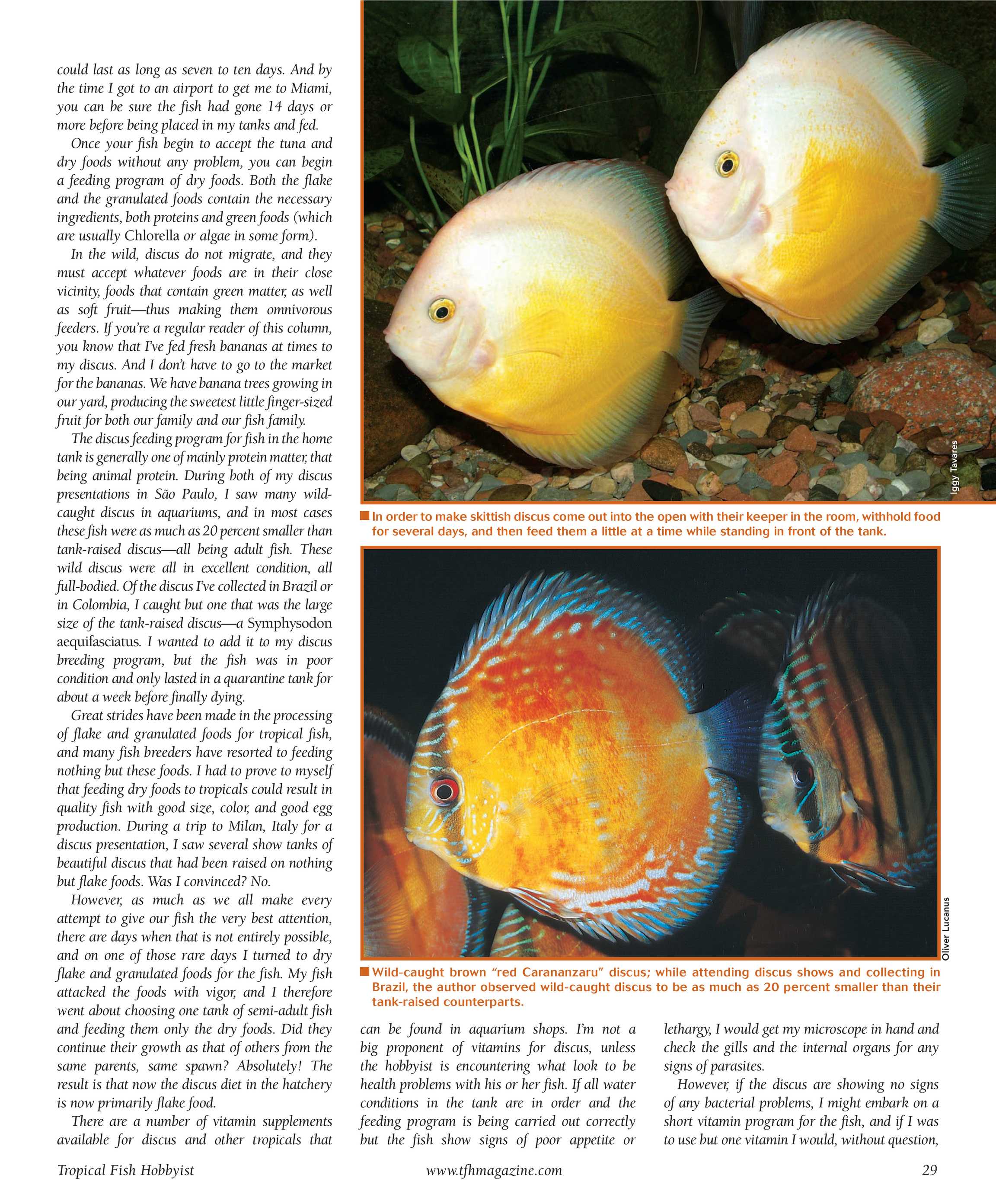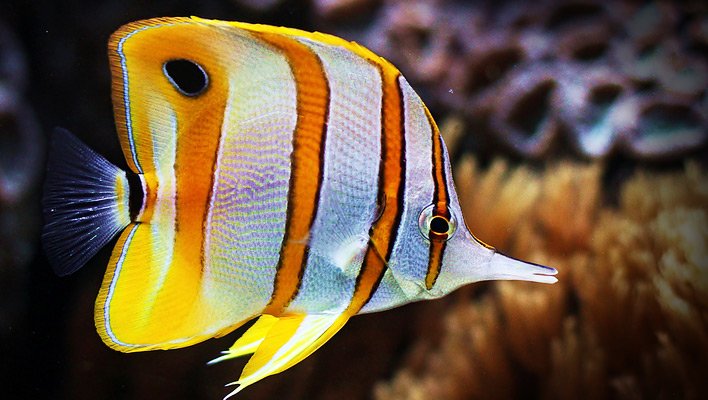Butterfly fish often face health issues like marine ich and bacterial infections. Proper tank conditions are crucial to their well-being.
Butterfly fish are popular in marine aquariums due to their vibrant colors and unique patterns. Maintaining their health requires understanding common issues and providing optimal care. Poor water quality can lead to diseases like marine ich and bacterial infections. Quarantine new fish to prevent the spread of illnesses.
Regularly monitor water parameters, such as pH and temperature, to ensure a stable environment. Providing a balanced diet also supports their immune system. Recognizing symptoms early, like changes in behavior or appearance, allows for prompt treatment. Proper care and vigilance can keep butterfly fish healthy and thriving in aquariums.

Credit: www.liveaquaria.com
Common Health Issues
Butterfly fish are beautiful and delicate creatures. They are susceptible to various health problems. Understanding these issues can help keep your fish healthy. This section highlights common health problems faced by butterfly fish.
Parasites
Parasites are a major concern for butterfly fish. These tiny organisms can cause severe health issues. Common parasites include ich, flukes, and marine velvet. Early detection is crucial for effective treatment.
- Ich: White spots on the fish’s body and fins.
- Flukes: Reddened skin and difficulty breathing.
- Marine Velvet: A dusty appearance on the fish’s body.
Regularly check your fish for these symptoms. Quarantine new fish before adding them to your tank. This helps prevent the spread of parasites.
Bacterial Infections
Bacterial infections are another common issue. They often result from poor water quality. These infections can be deadly if left untreated.
| Infection Type | Symptoms | Treatment |
|---|---|---|
| Fin Rot | Frayed or discolored fins | Antibiotic treatment |
| Ulcers | Open sores on the body | Medicated baths |
| Septicemia | Red streaks on the body | Antibiotic treatment |
Maintain clean water to prevent bacterial infections. Ensure proper filtration and regular water changes. This keeps your fish healthy and vibrant.

Credit: www.tfhdigital.com
Identifying Symptoms
Butterfly fish are beautiful and delicate creatures. Keeping them healthy requires careful observation. Identifying symptoms early can prevent severe health issues. In this section, we discuss how to spot potential problems.
Physical Signs
Physical signs are the most obvious indicators of health issues. Here are some key symptoms to watch for:
- Discoloration: Changes in color can indicate stress or disease.
- Fin Damage: Torn or ragged fins may suggest infections or poor water quality.
- Spots or Lesions: White spots or red lesions can be signs of parasites or bacterial infections.
- Swelling: Bloating or swelling often indicates internal problems.
Behavioral Changes
Behavioral changes can also reveal health issues. Pay attention to these behaviors:
- Lethargy: Reduced activity or sluggish movement might signal illness.
- Erratic Swimming: Rapid or abnormal swimming patterns can indicate distress.
- Loss of Appetite: Refusing food is a common symptom of various health problems.
- Hiding: Spending too much time hiding might suggest the fish is unwell or stressed.
Early detection through these signs can save your butterfly fish. Regular observation is key to maintaining their health.
Preventative Measures
Butterfly Fish are stunning creatures that require proper care. Ensuring their health involves taking preventative measures. This section covers essential tips to keep your Butterfly Fish healthy.
Proper Tank Maintenance
Maintaining a clean tank is vital for Butterfly Fish health. Regular water changes reduce harmful toxins. Aim for a 10-15% water change weekly.
Use a quality filter to keep the water clean. Check and clean the filter monthly. Monitor water temperature and maintain it between 72-78°F (22-26°C).
Test the water for pH, ammonia, nitrates, and nitrites weekly. Keep pH levels between 8.1-8.4. Install a protein skimmer to remove waste and prevent algae growth.
Balanced Diet
A balanced diet is crucial for Butterfly Fish. Feed them a variety of foods to meet their nutritional needs.
- Offer brine shrimp and mysis shrimp.
- Include marine algae and seaweed in their diet.
- Provide high-quality flake or pellet food.
Feed small amounts 2-3 times daily. Avoid overfeeding to prevent water pollution. Occasionally supplement their diet with vitamins.
| Food Type | Frequency |
|---|---|
| Brine Shrimp | Daily |
| Marine Algae | Weekly |
| Flake Food | Daily |
Varied diet ensures better health and vibrant colors. Monitor their eating habits to catch any health issues early.

Credit: www.facebook.com
Treatment Options
Butterfly fish are stunning additions to marine aquariums. Keeping them healthy is crucial. Understanding treatment options for their health problems is essential for every fish enthusiast.
Medications
Medications can treat various diseases in butterfly fish. Always use prescribed medications from trusted sources. Here are some common treatments:
- Antibiotics: Treats bacterial infections.
- Antifungals: Used for fungal diseases.
- Antiparasitics: Effective against parasites.
Administer medications in the right dosage. Overdosing can harm your fish. Consult a vet before using any treatment.
Quarantine Procedures
Quarantine new fish to prevent disease spread. A separate tank is essential. Follow these steps for effective quarantine:
- Place new fish in a quarantine tank for at least two weeks.
- Monitor for any signs of illness.
- Feed them a nutritious diet to boost immunity.
Keep the quarantine tank clean. Regular water changes are vital. Use a separate set of equipment for the quarantine tank.
Below is a table with essential steps for a quarantine procedure:
| Step | Action |
|---|---|
| 1 | Set up a separate tank |
| 2 | Place new fish in the tank |
| 3 | Monitor for illness signs |
| 4 | Feed a nutritious diet |
| 5 | Maintain clean water |
Water Quality Management
Maintaining excellent water quality is vital for the health of butterfly fish. Poor water conditions can lead to stress and disease. Proper water quality management ensures a healthy environment for your fish.
Optimal Parameters
Butterfly fish thrive in specific water conditions. Keep the temperature between 72-78°F. The pH level should stay between 8.1 and 8.4. Salinity must be kept at 1.020 to 1.025. These parameters are crucial for their health.
| Parameter | Optimal Range |
|---|---|
| Temperature | 72-78°F |
| pH Level | 8.1-8.4 |
| Salinity | 1.020-1.025 |
Regular Testing
Testing water quality regularly is important. Use test kits to check temperature, pH levels, and salinity.
- Test temperature daily.
- Check pH levels weekly.
- Monitor salinity weekly.
Regular water changes help maintain quality. Change 10-20% of the water weekly. This helps remove toxins and maintains a clean habitat.
- Prepare fresh saltwater.
- Remove old water.
- Add new water slowly.
Diet And Nutrition
Maintaining a proper diet is crucial for the health of butterfly fish. Their vibrant colors and active behavior reflect their nutritional intake. A well-balanced diet ensures they thrive in home aquariums.
Essential Nutrients
Butterfly fish need a mix of proteins, fats, and vitamins. Proteins support growth and muscle development. Fats provide energy and aid in nutrient absorption. Vitamins boost immune health and prevent diseases.
| Essential Nutrient | Function | Source |
|---|---|---|
| Proteins | Growth and muscle development | Brine shrimp, mysis shrimp |
| Fats | Energy and nutrient absorption | Marine fish oils, enriched brine shrimp |
| Vitamins | Immune health and disease prevention | Vitamin-enriched flake food |
Feeding Tips
- Feed small amounts multiple times a day.
- Use varied foods for balanced nutrition.
- Avoid overfeeding to prevent water quality issues.
- Soak dry foods in water to improve palatability.
- Remove uneaten food to keep the tank clean.
Following these tips ensures your butterfly fish stay healthy. A varied diet keeps them active and colorful.
Stress Factors
Butterfly fish are delicate creatures. They are sensitive to various stress factors. Understanding these factors helps in maintaining their health. Stress can lead to serious health problems. Let’s explore the main stress factors affecting butterfly fish.
Environmental Stress
Environmental stress greatly impacts butterfly fish. Poor water quality is a major factor. Ensure the tank water is clean and properly filtered. Water temperature changes can also stress the fish. Maintain a stable temperature between 72°F and 78°F. Provide proper lighting and avoid bright lights that may scare them. Regularly check the pH levels, keeping it between 8.1 and 8.4.
| Environmental Factor | Optimal Range |
|---|---|
| Water Temperature | 72°F – 78°F |
| pH Level | 8.1 – 8.4 |
| Lighting | Moderate |
Social Stress
Butterfly fish can experience social stress. Crowded tanks cause stress. Provide enough space for each fish. Butterfly fish are territorial. Avoid placing them with aggressive species. Ensure a peaceful tank environment. Also, lack of hiding spots can stress them. Provide plenty of hiding places using rocks and plants. This helps them feel secure.
- Provide enough space
- Avoid aggressive tank mates
- Create hiding spots
When To Consult A Vet
Butterfly fish are delicate creatures. They can face health problems easily. Knowing when to consult a vet is crucial. It can save their lives. Early detection of issues is key. This guide helps you identify severe illness signs. It also guides you in finding the right specialist.
Signs Of Severe Illness
Spotting severe illness in butterfly fish is vital. Look for these signs:
- Loss of appetite
- Swollen or cloudy eyes
- Rapid breathing
- White spots or lesions on the body
- Erratic swimming patterns
- Discoloration or dull colors
- Clamped fins
If you observe any of these signs, consult a vet immediately. Early intervention can make a big difference. Always monitor your fish closely.
Finding A Specialist
Not all vets are fish experts. Finding a specialist is essential. Here’s how to find one:
- Search online for aquatic vets in your area.
- Ask local pet stores for recommendations.
- Join online fish-keeping forums.
- Check vet directories for aquatic specialists.
Once you find a specialist, schedule a visit. Bring detailed notes about your fish’s symptoms. This helps the vet diagnose the problem quickly.
Taking swift action saves lives. Monitor your butterfly fish daily. Know the signs of severe illness. Find a qualified vet when needed.
Frequently Asked Questions
What Is The Lifespan Of A Butterfly Fish?
The lifespan of a butterfly fish ranges from 5 to 7 years in the wild. Proper care extends their life in captivity.
Is Butterfly Fish Good To Eat?
Butterfly fish are not commonly eaten. They are primarily valued for their beauty in aquariums. Some species may contain toxins, making them unsuitable for consumption. Always consult local guidelines.
Why Are Butterfly Fish Hard To Keep?
Butterfly fish are hard to keep due to their specialized diets, susceptibility to disease, and specific water conditions. They require expert care.
How Many Butterfly Fish Should Be Kept Together?
Keep butterfly fish in pairs or small groups. Ensure a large tank to reduce territorial aggression and stress.
Conclusion
Maintaining the health of butterfly fish is crucial for their well-being. Regular monitoring and proper care can prevent many issues. Ensure a clean tank and balanced diet. Consult a vet for any signs of illness. Healthy butterfly fish will thrive and bring vibrant beauty to your aquarium.
